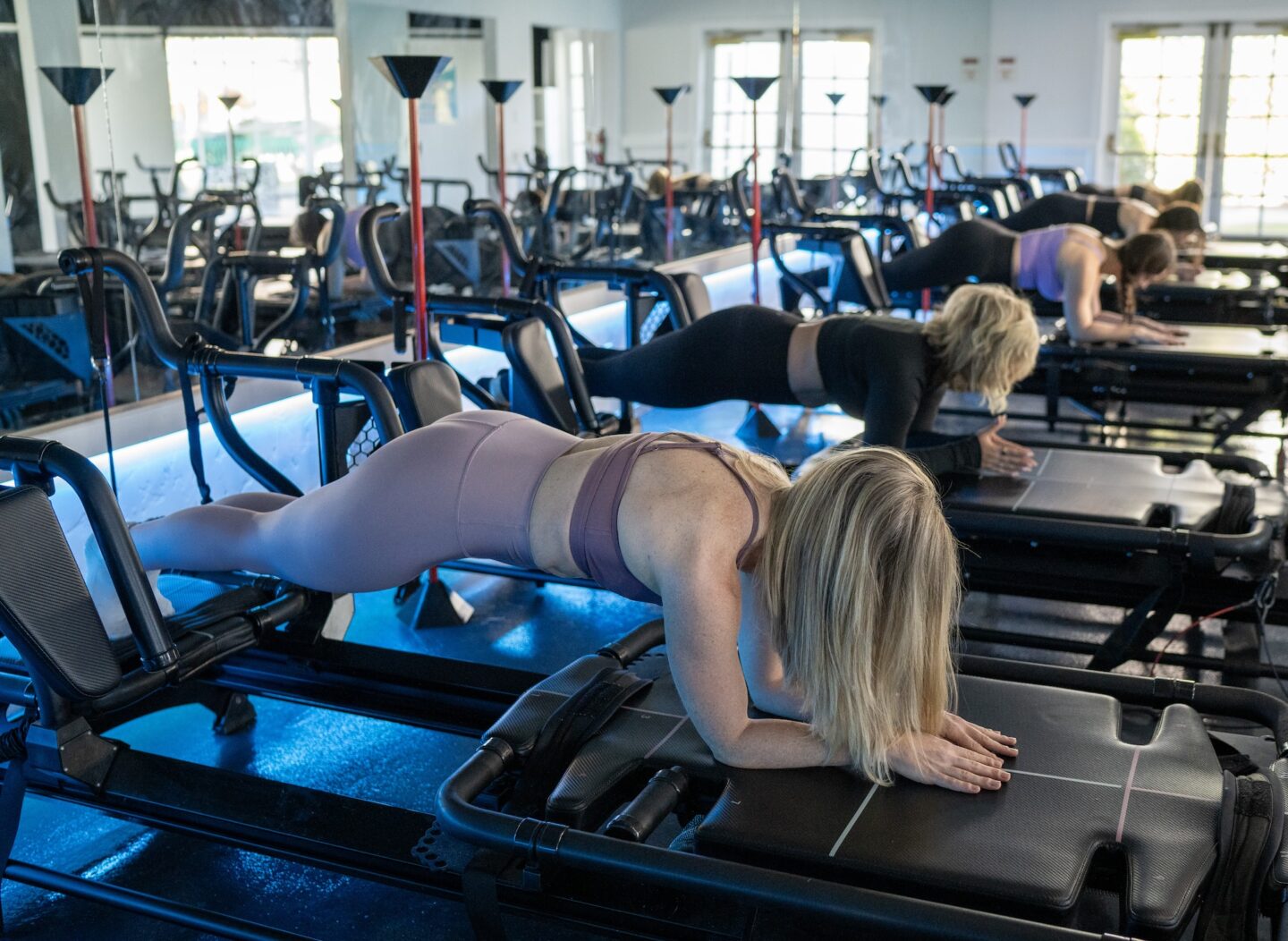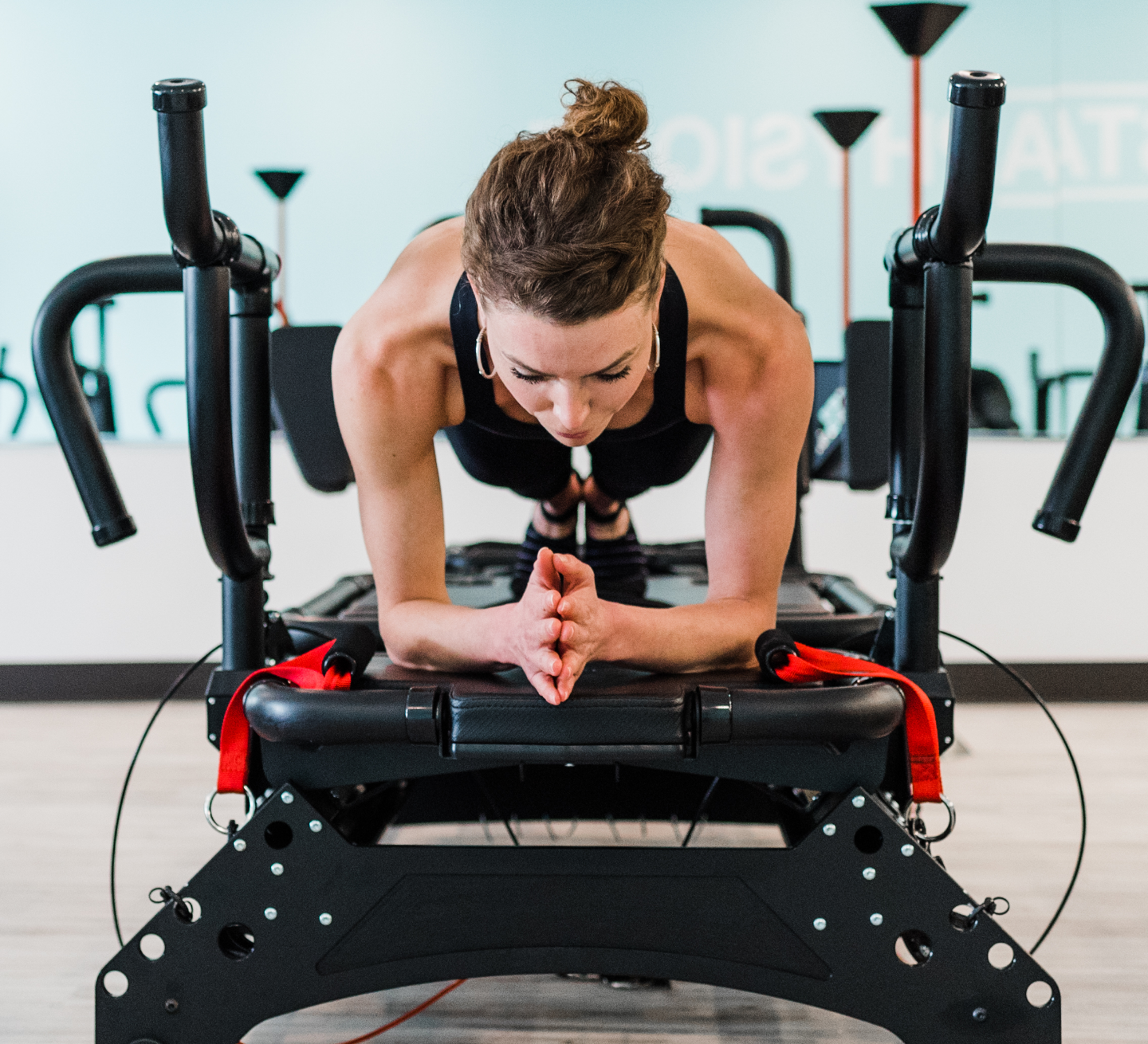Planks. Most either love them or hate them. But, if you’re looking to create strength and stamina from the inside out, they should be one of your go-to moves!
Want to improve your plank form? You first need to learn how to properly brace your core so that your low back doesn’t take over. If you’re feeling your low back taking over during planks, that means you aren’t doing them correctly…plain and simple.
Why does your low back want to take over?
Often our abs are inactive and our hips are tight because of our modern lifestyle, which can cause our low back to do work that it shouldn’t, and can’t handle.
On the Megaformer InstaPhysique, we can adjust for this by body placement, dropping to the knees, or providing a more supportive spring load. If you incorporate the below tips, you will be improving your plank form and endurance in no time!
Here’s our top 7 tips to getting the most out of every plank…
- Create your best straight line from the top of your head to your hips to your heels. If you’re opting for a plank on your knees, create your best diagonal line from your head to your hips to your knees.
- Draw your navel up and in at a diagonal between your shoulder blades. Brace your abs like you’re about to get punched in the stomach. Notice the muscle contraction and the tension it provides.
- Broaden your collar bones to lift off your wrists – or elbows, if you’re choosing a forearm plank. If you prefer planking on your forearms, get out of the habit of clasping the hands together in a triangle shape. This puts an emphasis on the pectorals, rather than the core. By opening up the arms to a shoulder width, you shift the load to where it belongs, into the core.
- Lift your heart to broaden the space between shoulder blades, without rounding. Without hunching, slide the shoulder blades down your back.
- Narrow your outer hip bones without gripping your booty. This activates your low belly for healthy conditioning and flat abs!
- Resist gravity and the tension from the springs. By resisting gravity, you’re turning on your transversus abdominis, the hoop-like muscle at the deepest layer of the core. This is where the stability of plank begins.
- BREATHE! When you take a deep breath in and exhale out, you’ll train an important and neglected core muscle, the diaphragm. As you hold the plank, take a deep breath through your nose, breathing in through your diaphragm-not your chest. As you breathe in, tighten every muscle in your body. Hold for a second. After holding the air in, exhale through your mouth, pushing out all the air you possibly can.
In you plank, there should be zero back pain and no hip flexor pain. This can take time to perfect, especially if you’ve used everything but your core to do the core’s job throughout your life. Next time you’re in class, focus on your breathing and work on making these little tweaks to perfect your form, then feel the burn all over.
Happy Planking!






